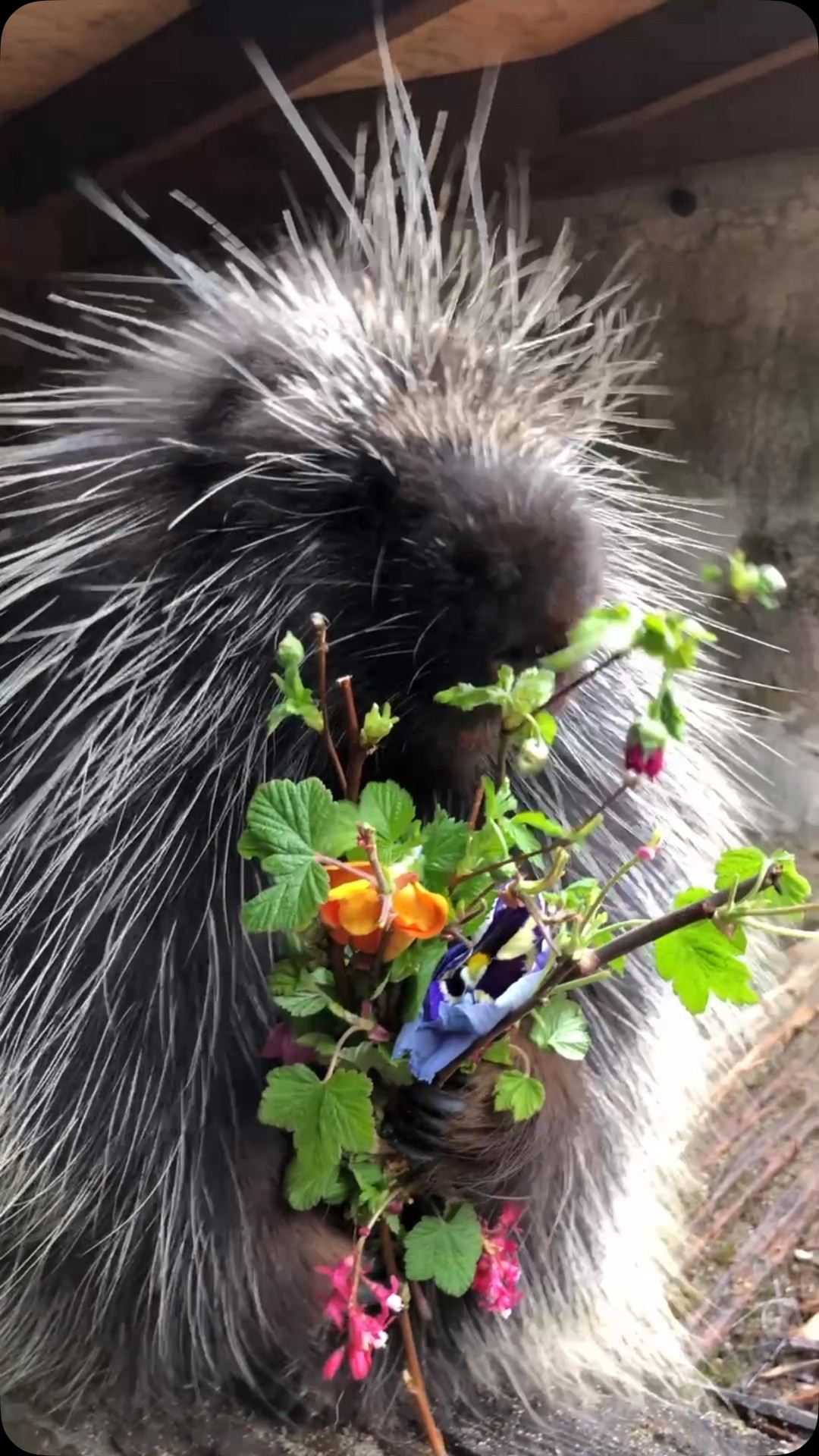- The natural behavior and dietary habits of porcupines, highlighting Thistle’s preference for flowers.
- The role of zoos in wildlife conservation, education, and how they enhance public understanding of species like Thistle the porcupine.
- Understanding the impact of climate and seasonal changes on the lives of animals in captivity and the wild.
- The importance of environmental enrichment for captive animals and how it can influence their well-being.
- Technology and social media as tools for engaging the public and promoting wildlife conservation efforts.
Porcupines are intriguing creatures characterized by their spiny defense mechanisms and varied dietary habits. Thistle, the celebrated porcupine, offers a glimpse into the fascinating world of these unique mammals. This article delves into the nuances of porcupine behavior, especially their dietary preferences, emphasizing how Thistle enjoys nibbling a bouquet of flowers to welcome spring.
Porcupines, though often associated with sharp quills, are herbivorous animals. Their diet in the wild primarily consists of leaves, herbs, twigs, and green plants. Some species have been observed gnawing on bark or rooting for tubers and roots when snow covers other food sources. These creatures possess a remarkable ability to adapt their diet based on seasonal availability, ensuring they receive the necessary nutrients year-round.
In a zoo environment, dietary management becomes critical. Caretakers must provide balanced meals that mimic the porcupines’ natural diet. Thistle’s choice to nibble on flowers is not just a whimsical act but a reflection of the species’ natural inclination to explore various plant materials. Flowers can be more than a delicacy; they offer additional nutritional and sensory enrichment. By allowing Thistle to indulge in flower bouquets, zoo staff engage in a practice known as dietary enrichment, promoting natural foraging behaviors and contributing to the animal’s mental and physical well-being.
The role of zoos in wildlife conservation and education extends far beyond simply displaying animals. Modern zoos are dynamic institutions that play a pivotal role in conservation, research, and education. They provide a sanctuary for threatened species, participate in breeding programs, and are instrumental in rehabilitating endangered populations. Thistle’s presence in a zoo setting amplifies awareness of porcupines and underscores the role zoos play in wildlife conservation efforts.
Through educational exhibits and interactive programs, zoos help foster a greater understanding of animal behavior, ecology, and the importance of conservation. The aim is to cultivate a compassionate and informed public. For instance, visitors who learn about Thistle’s behaviors and diet gain a deeper appreciation for porcupines and their ecological roles. By demystifying these animals, zoos inspire conservation action among the public, emphasizing the interconnectedness of all species and habitats.
Climate and seasonal changes significantly impact the lives of animals both in captivity and the wild. Springtime symbolizes renewal and growth, affecting animals’ behaviors and physiological processes. In nature, porcupines would respond to longer daylight hours and warmer temperatures by seeking out new food sources and adjusting their foraging patterns.
In a controlled zoo environment, these changes must also be simulated. Animal care professionals adjust the environmental conditions to align with seasonal shifts. This involves modifications to diet composition, exercise routines, and habitat enrichment practices. For porcupines like Thistle, spring might be celebrated with the addition of fresh plant materials and opportunities for increased exploration, mirroring the habitats they would naturally encounter.
Environmental enrichment is a crucial aspect of animal care in zoos, as it significantly influences animal welfare. Enrichment refers to the introduction of stimuli that promote physical and mental engagement, encouraging species-specific behaviors. For porcupines, this could involve providing objects that replicate natural textures and opportunities for climbing and foraging.
When Thistle nibbles on flowers, it is an outcome of successful enrichment strategies designed to maintain natural behaviors while in captivity. This aspect of zoo management is vital for promoting animal health and preventing behavioral issues that can arise from limited stimulation. By offering diverse enrichment activities, zoos enable animals to express natural behaviors, which enhances their quality of life.
Technology and social media have revolutionized how zoos communicate with the public and advocate for wildlife conservation. Platforms like Instagram offer real-time engagement opportunities, reaching broader audiences, and educating them on conservation issues. By sharing intriguing vignettes of animal behaviors, such as Thistle enjoying a bouquet of flowers, zoos can capture public attention and facilitate educational dialogue.
Moreover, these digital tools function as invaluable marketing resources, drawing attention to conservation initiatives and fundraising campaigns. Social media posts also have the potential to inspire global audiences, generating interest and support for the conservation of less familiar species like the porcupine. This synergy between digital engagement and conservation contributes to building a more informed and proactive community dedicated to protecting biodiversity.
Ultimately, Thistle the porcupine, through the simple yet profound act of savoring flowers, underscores the critical importance of understanding animal behavior, conservation, and the nuanced roles zoos play in fostering empathy for all creatures. Each element of Thistle’s life, from her diet to her role in public education, intertwines with broader themes in wildlife conservation, illustrating the interconnectedness of ecosystems, species, and human actions. It’s a poignant reminder of the intricacies of life, encouraging continuous learning and responsible stewardship of our natural world.
*****
Source Description
Thistle the porcupine is celebrating the first day of spring in the best way, by nibbling on a fresh bouquet of flowers! 🌷


